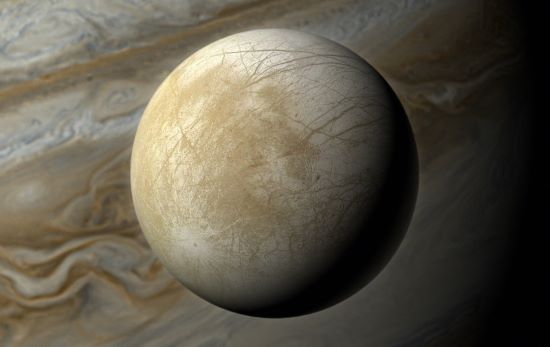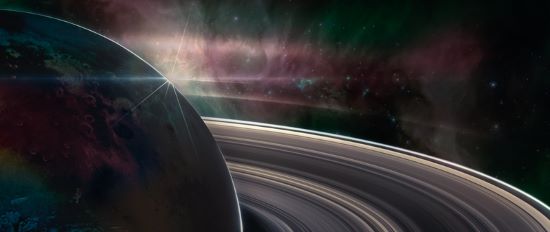Several recently announced space stories caught my eye. These include:
- China’s recent announcements about its space plans.
- A star named Gliese 710 will approach our Solar System in 1.3 million years.
- Europa Clipper launched to search for signs of life on a Jovian moon.
- Bloomberg’s Opinion About NASA’s Artemis Program.
In Part 1, we looked at China’s space plans and a star named Gliese 710. In Part 2, you can read the first story describing the Europa Clipper and the search for life in the outer Solar System. The second story describes Bloomberg’s assessment of the Artemis Program boondoggle, the well-over-budget NASA-led project to return humans to the lunar surface.
An Upcoming Jupiter Moon Europa Visit

The largest interplanetary probe ever launched is called the Europa Clipper. It took off for the Jovian system on October 14, 2024. The 6,000-kilogram (13,000-pound) spacecraft will take five years to reach Jupiter because it will take an indirect, gravity-assisted route swinging it by Mars and then back towards Earth before going on to Jupiter. The routing will save precious fuel to help extend the mission once it arrives in the Jupiter system.
The Clipper plans to make at least 49 flybys of Europa which is believed to contain a body of water, although yet to be confirmed, lying beneath its icy crust. Some scientists speculate that the amount of water is greater than all the Earth’s oceans combined.
It is all that water that makes Europa a compelling place to search for life elsewhere in the Solar System and the Universe. Why is that? Because life on Earth first originated in water.
If the Clipper’s instrumentation confirms this under-surface ocean, it will reinforce the theory of how it came to be. Scientists believe Jupiter is the reason for Europa’s watery interior. The giant planet and other inner Jovian moons exert gravitational tidal forces on Europa that have been keeping its interior warm. This tidal heating is an energy source that is producing interesting chemistry which is evident from deposits of carbon dioxide ice discovered on the moon’s surface. These deposits and the existence of an atmosphere make Europa even more intriguing. The deposits and atmosphere are related to cracks seen in the icy shell that is believed to be between 15 to 25 kilometres in thickness. Plume-like geysers called cryovolcanoes have been observed spewing subsurface contents into Europa’s atmosphere.
The few visible impact craters point to a surface terrain under constant rejuvenation. Surface areas given the descriptor, chaos terrain, provide further evidence of subsurface activity.
We have learned all of this from three previous spacecraft, Voyager, Galileo and Juno visits to the Jovian system as well as from observations by the Hubble Space Telescope and now the James Webb.
The Clipper’s onboard instrumentation is heavily shielded to withstand the radiation belts that circle Jupiter and its inner moons including Europa. It is hoped that the onboard instruments will unlock many of the moon’s secrets. These include:
- An ice-penetrating radar called REASON (Radar for Europa Assessment and Sounding: Ocean to Near-surface) will map the surface and probe the water beneath.
- A near-infrared spectrometer called MISE will study the organic and inorganic compounds on the moon’s surface.
- An ultraviolet spectrograph called Europa-UVS) will measure the atmosphere and cryovolcano activity.
- The Europa Imaging System (EIS) will transmit high-resolution surface images back to Earth revealing details about the cracks and ridges and how they may relate to the subsurface ocean.
Exobiologists can’t wait to confirm the existence of the subsurface ocean, its depth, volume, salinity and chemistry. They hope the radar identifies other water sources including pockets with the icy shell.
Exobiologists see in this ice moon a model for potentially habitable environments that expand our ideas of where life may exist in the Universe beyond the Goldilocks Zones that circle our Sun and other stars.
The Europa Clipper is scheduled to arrive at Jupiter on April 11, 2030.
Bloomberg Says New Moon Mission Is “Going Nowhere”

In Michael Bloomberg’s words, “There are government boondoggles, and then there’s NASA’s Artemis program.” He states his respect for science and space exploration but sees Artemis as “a colossal waste of taxpayer money.”
I repeatedly have criticized NASA’s approach to returning to the Moon using the Space Launch System (SLS) and the Orion capsule. See my posting in 2019 when I asked when will NASA abandon this largely throwaway approach that mimics the technology choices made during Apollo at the height of the Cold War.
Bloomberg lists the money burned so far at $23.8 billion for the SLS. He adds the $20 billion spent on the Orion capsule alone with the latest non-crewed flight demonstrating a faulty heat shield.
He notes $5 billion being spent on the Lunar Gateway Project, a cislunar space station with many questioning its need.
He describes future iterations of the SLS for later Artemis flights that will add $5.7 billion to the cost and require a new $2.7 billion launch tower.
He notes that each flight will come with a $1 billion price tag.
Meanwhile, he points to SpaceX which continues to make progress with a reusable alternative that has greater payload capacity and that can carry crews and cargo to the Moon and back.
Bloomberg calls it “celestial irony” that NASA and its Artemis partners are spending all this money on the SLS, Orion and Gateway when the latest demonstration of Starship and the Super Heavy Booster illustrates the speed of progress being made on it.
And finally, he asks “What on Earth are we doing?” as NASA cuts its science mission budgets to divert money to Artemis. Cancelled and postponed missions include the Mars Sample Return mission to bring back specimens collected by the Perseverance rover on Mars, the Veritas mission to study Venus, the Viper lunar rover, and the NEO Surveyor telescope, to catalogue Near-Earth asteroids to determine if, in the future, any of them could endanger life on Earth.









